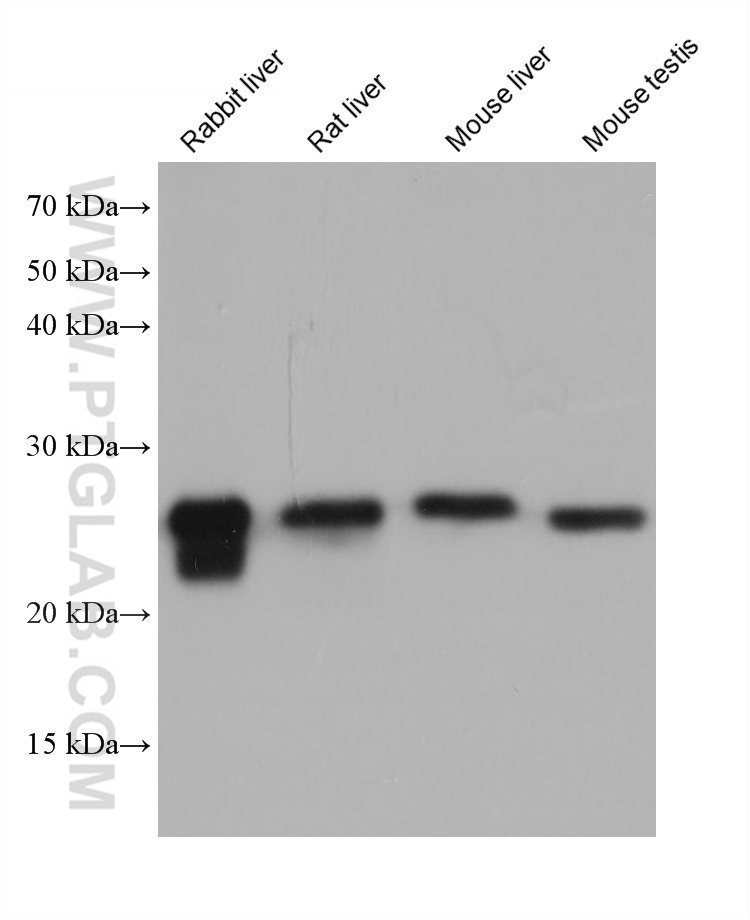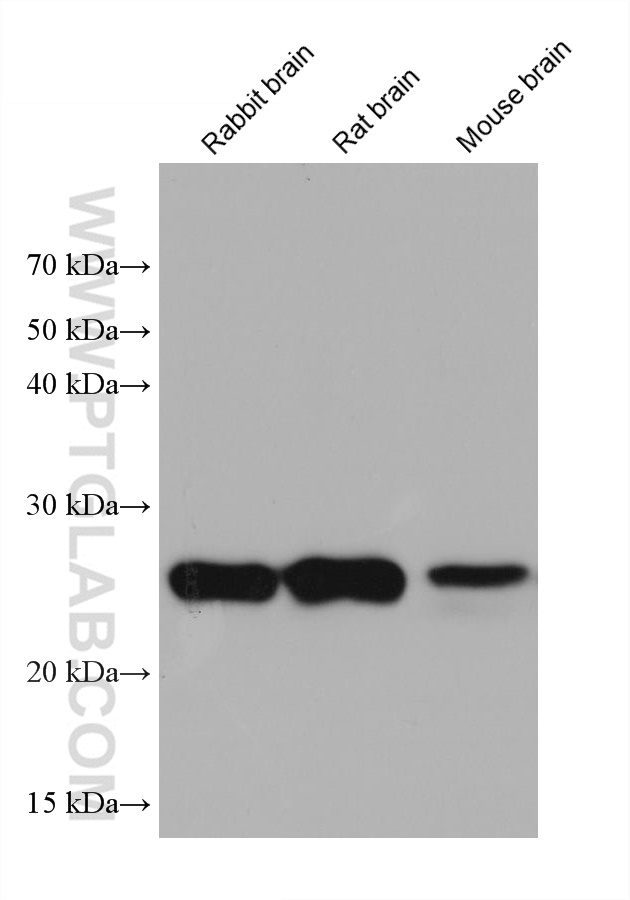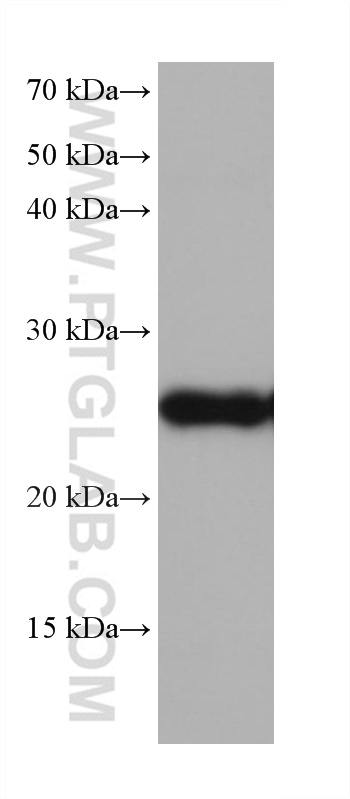验证数据展示
经过测试的应用
| Positive WB detected in | rabbit brain tissue, pig liver tissue, rabbit liver tissue, rat brain tissue, mouse brain tissue, mouse liver tissue, mouse testis tissue |
推荐稀释比
| 应用 | 推荐稀释比 |
|---|---|
| Western Blot (WB) | WB : 1:5000-1:50000 |
| It is recommended that this reagent should be titrated in each testing system to obtain optimal results. | |
| Sample-dependent, Check data in validation data gallery. | |
发表文章中的应用
| WB | See 1 publications below |
产品信息
68210-1-Ig targets GSTM5 in WB, ELISA applications and shows reactivity with Human, mouse, rat, pig, rabbit samples.
| 经测试应用 | WB, ELISA Application Description |
| 文献引用应用 | WB |
| 经测试反应性 | Human, mouse, rat, pig, rabbit |
| 文献引用反应性 | human |
| 免疫原 | GSTM5 fusion protein Ag6054 种属同源性预测 |
| 宿主/亚型 | Mouse / IgG2a |
| 抗体类别 | Monoclonal |
| 产品类型 | Antibody |
| 全称 | glutathione S-transferase mu 5 |
| 别名 | glutathione S transferase mu 5, GST class mu 5, GSTM5, GSTM5 5, GTM5 |
| 计算分子量 | 26 kDa |
| 观测分子量 | 26 kDa |
| GenBank蛋白编号 | BC058881 |
| 基因名称 | GSTM5 |
| Gene ID (NCBI) | 2949 |
| RRID | AB_2935298 |
| 偶联类型 | Unconjugated |
| 形式 | Liquid |
| 纯化方式 | Protein A purification |
| UNIPROT ID | P46439 |
| 储存缓冲液 | PBS with 0.02% sodium azide and 50% glycerol, pH 7.3. |
| 储存条件 | Store at -20°C. Stable for one year after shipment. Aliquoting is unnecessary for -20oC storage. |
背景介绍
GSTM5, Glutathione S-transferases, belongs to eukaryotic and prokaryotic phase II metabolic isozymes family. It can catalyze the conjugation of the reduced form of glutathione (GSH) to xenobiotic substrates for detoxification. GSTM5 undergo epigenetic repression in AMD (age-related macular degeneration) RPE/choroid, which may increase susceptibility to oxidative stress in AMD retinas (PMID: 22410570). GSTM5 was found in brain, lung and testis (PMID: 9230131).
实验方案
| Product Specific Protocols | |
|---|---|
| WB protocol for GSTM5 antibody 68210-1-Ig | Download protocol |
| Standard Protocols | |
|---|---|
| Click here to view our Standard Protocols |


